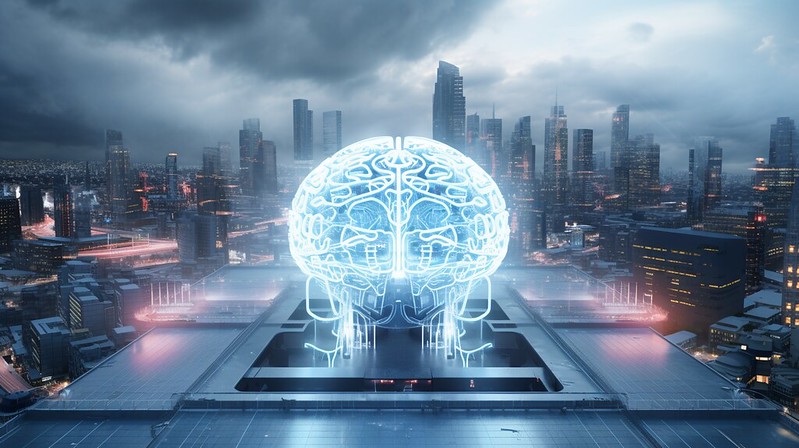
To further develop artificial intelligence (AI) and make it smarter, scientists are now blending ordinary machine learning with a fancy 3D human brain model instead of using high-tech computers alone. This model is not an actual brain but a tiny version grown in a lab, often called a “minibrain,” and it has actually been around since 2013.
Electrical data is sent into the minibrain using regular computing tools. The minibrain reacts, and scientists analyze its activity to generate an outcome. Hence, the minibrain acts as the “middle layer” in the computing process.
Initial step towards developing biocomputers using AI and minibrain
Though the approach is a long way from perfectly copying the actual structure or functioning of the brain, it could mark an initial move toward developing biocomputers. These biocomputers would learn from nature’s playbook, aiming to be mightier and utilize less energy than computers we’ve been used to. Additionally, this method might offer a deeper understanding of how our brains work and shed light on conditions such as Alzheimer’s and Parkinson’s.
In the recent study published on Monday, December 11, 2023 in the journal Nature Electronics, scientists employed a method known as reservoir computing. Here, the organoid plays the role of the “reservoir.” In this setup, the reservoir stores and reacts to the information it receives. An algorithm learns to identify changes in the reservoir caused by different inputs and translates these changes into outputs.
Functioning of the brain organoid in the creation of a hybrid computer using AI and a minibrain
In explaining the process, Feng Guo, the co-author of the study and an associate professor of intelligent systems engineering at Indiana University Bloomington, said, “Basically, we can encode the information—something like an image or audio information—into the temporal-spatial pattern of electrical stimulation.”
Simply put, the organoid reacts differently based on when and where the electricity from the electrodes hits. The algorithm learned to understand these electrical responses from the organoid. Even though the brain organoid is much simpler than a real brain—a small ball of brain cells—it can adapt and change in reaction to electrical stimulation.
The various brain cells at different stages of development and brain-like structures in the organoid somewhat mimic the manner by which our brains change in response to electrical signals. This is crucial for learning.
Recognition of speech and math in hybrid computers utilizing a combination of AI and minibrains
With this unique setup, scientists have thus far taught their special algorithm to do two particular tasks: recognize speech and do math. For the speech task, the computer is capable of achieving about seventy-eight percent accuracy in recognizing Japanese vowel sounds from numerous audio samples.
It also performs quite well in the math task, although less efficiently than traditional machine learning methods.
Advantages of creating biocomputers through AI and minibrains
Creating biocomputers offers a notable advantage in energy efficiency, given that our brains use much less energy than today’s advanced computer systems. However, according to Lena Smirnova, an assistant professor of environmental health and engineering at Johns Hopkins University, it might be decades before we see technology like this being used to develop a widely applicable biocomputer.
Brain Organoid Reservoir Computing #organoids https://t.co/xDnMYsZObC
— Sreeram Penna (@SreeramPenna) December 11, 2023
Even though organoids are far from replicating the complexity of full-fledged human brains, Smirnova is optimistic that this technology could enhance our understanding of how the brain functions, particularly with diseases such as Alzheimer’s.
By combining the brain’s structure with organoids and its function through computing, researchers could gain insight into the relationship between the brain’s structure and processes such as learning and cognition.
See all the latest news from Greece and the world at Greekreporter.com. Contact our newsroom to report an update or send your story, photos and videos. Follow GR on Google News and subscribe here to our daily email!



